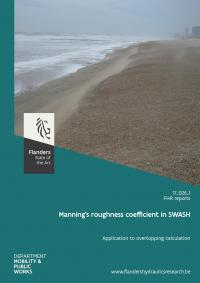Gedaan met laden. U bevindt zich op: Manning's roughness coefficient in SWASH. Application to overtopping calculation
Manning's roughness coefficient in SWASH. Application to overtopping calculation
The wave overtopping calculation method for the Safety assessment 2015 was defined in Suzuki et al. (2016). In order to get a conservative overtopping value for the safety assessment, the Manning’s roughness coefficient n in the SWASH 1D overtopping calculation was deliberately set as zero. This choice however impacts the estimation of wave overtopping over a cross shore profile which includes a foreshore having a ‘dry beach’ part in front of the dike. Normally, a sandy beach should add dissipation to wave propagation because of its roughness. Being excluded in the aforementioned methodology, this leads to an overestimation of wave overtopping. In this study, the bottom friction parameter in SWASH is further explored for overtopping calculation under a condtion with long berm (e.g. 50 m) in front of the dike.
After the study it has been concluded that material based n value gives good estimation for wave transformation and run-up, for all the tested cases. Taking into account the fact that the Manning coefficient n for the sand and promenade material would be around 0.019, and therefore the default bottom friction value n=0.019 is recommended for overtopping calculation in SWASH.

Lees de publicatie
- Publicatiedatum
- Februari 2018
- Publicatietype
- Onderzoeksrapport
- Thema's
- Scheepvaart en havens
- Auteur(s)
- T. Suzuki, C. Altomare, S. De Roo, D. Vanneste, F. Mostaert
- Reeks
- FHR reports 17_026_1